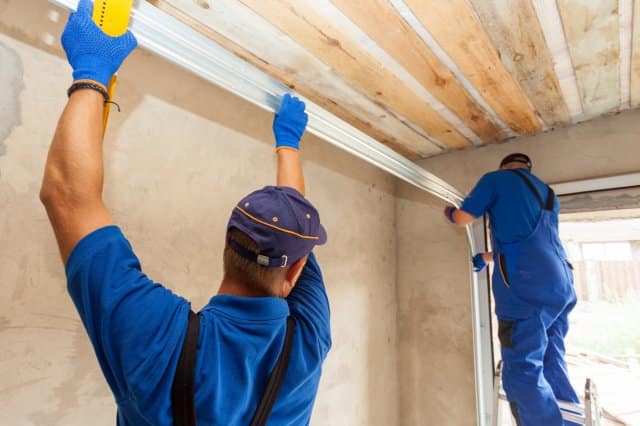When considering garage door repair, security should be front of mind. Read these security tips to keep your property safe.
The second law of thermodynamics states that the entropy of any isolated system always increases. A garage door opener, being an isolated system, will eventually experience entropy. This means it will eventually break down.
You’re most likely reading this article thinking, “Yeah, I can relate to that. Mine just broke down yesterday.” You’re sitting there with two options: unhook the attachment arm and manually open your garage door every day or call a repairman.
The first will leave your house unprotected from anyone willing to lift a door. The second is expensive.
There are a few things you can do before you call a garage door repair professional. Maybe one of these fixes will get your garage door opener working again.
1. Clean the Rollers and the Tracks Before Calling a Garage Door Repair Professional
If your garage door opens or closes only part way, you might want to examine the tracks. Like anything that runs on a track (think trains), your garage door can’t open or close if something is blocking the tracks. And your garage door might only close partway and then open again after you’ve turned your back.
Unlike trains, your garage door runs on an internal track. The wheels are trapped inside a metal corridor. If grease and dirt build up in any specific section, the wheels won’t move freely.
Take a pipe brush and run it inside the tracks. Check the tracks to see if they are plumb on the vertical sections. Sometimes a track section will move just a tad and when one section isn’t level with another, the wheels won’t move between sections.
If the tracks are too far out of alignment, you might still need a garage door repair professional.
2. Tighten the Hardware
If your garage door rattles as it descends and elevates, you might want to check the hardware. Bolts and nuts will tighten or expand in the heat and cold. Vibration jiggles these pieces lose.
All you need to fix this problem is a socket wrench and maybe a screwdriver. Get a ladder and move from joint to joint tightening every bolt and screw you find.
Just be careful not to overtighten. You can damage the threads on a bolt or screw if you overtighten.
3. Inspect and Replace Rollers
If you’ve ever owned anything that runs on wheels, you’ll know that you have to replace either part or all of the wheel every once in a while. Your garage door’s rollers are no different.
You’ll need new garage door rollers, a clamp, pliers, a large flathead screwdriver, a prybar, and someone to spot the door. You simply bend out part of the track near a section break and lower the door through the new opening. Remove the wheel and replace.
Be sure to release the door from the power opener before attempting this repair on your garage door.
Most garage door problems are easy to repair if you know what you’re doing. If you can’t seem to fix the problem it’s time to call a garage door repair professional.


